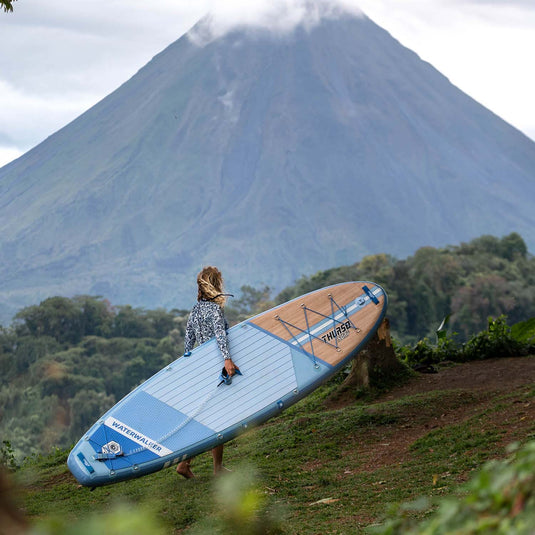Kayaking is an incredible on-the-water activity; we can all agree on that. But it also leaves the paddler exposed to the elements – wind, water, and sun’s UV rays – all at once.
That is where the best wetsuit for kayaking comes into play as your first line of defense.

What is a wetsuit?
A wetsuit keeps your body warm by trapping a thin layer of water between your skin and the suit. Your body heat warms this trapped water, creating an insulating layer that helps maintain your core temperature. This is especially important when kayaking in cold water, as hypothermia can quickly develop if you get wet and cold.
Factors to consider when deciding whether you need a wetsuit:
Water temperature: The most important factor in deciding whether to wear a wetsuit is the water temperature. Generally, a wetsuit is recommended for water temperatures below 16°C (60°F) to protect against hypothermia. In colder climates, a drysuit may be a better choice, as it provides an additional layer of insulation and keeps you completely dry.
Air temperature : The air temperature can also play a role in whether you need a wetsuit. If the air temperature is significantly lower than the water temperature, you may need a wetsuit to stay warm. Conversely, if the air temperature is significantly higher than the water temperature, you may be able to wear a dry top or long-sleeved rash guard instead.
Personal comfort and preference : Everyone has different cold tolerance levels. Some people feel comfortable kayaking in a wetsuit even in water temperatures as low as 10°C, while others prefer wearing a wetsuit even in warmer water. It's important to listen to your body and dress accordingly to ensure a comfortable and safe kayaking experience.
Type of kayaking : The type of kayaking you're doing can also influence your decision to wear a wetsuit. For example, if you're planning a multi-day kayaking trip, you might need a wetsuit for extended periods in cold water. However, if you're just planning a short paddle on a warm day, you might not need a wetsuit at all.
How to choose a wetsuit for kayaking
Water temperature and wetsuit thickness – this is the most important factor. Wetsuit thickness is measured in millimeters (mm). You'll find specifications such as "3/2 mm" or "4/3 mm." The first number refers to the thickness of the neoprene on the torso (for core warmth), the second number to the thickness on the limbs (for flexibility).
Use this general guideline, but remember to adjust it to your personal cold tolerance, air temperature, and wind conditions.
18°C+ : 1.5 mm to 2 mm neoprene top or shorty wetsuit. You may only need it for protection from wind or spray.
15–18 °C : 2 mm or 3/2 mm full-body suit. Above this temperature, a full-body suit becomes essential for safety reasons.
10–15 °C (50–60 °F) : 3/2 mm or 4/3 mm full-body wetsuit. This provides serious protection against cold water. Wearing a paddling jacket is strongly recommended.
Below 10 °C (50 °F) : 4/3 mm or 5/4 mm. At these temperatures, you should definitely consider a drysuit, especially if the air is also cold.
Pro tip: Always dress for the water temperature, not the air temperature. A sunny day at 21°C can be fatal if the water is 10°C and you capsize.
Alternatives to wetsuits:
If you decide that you don't need a wetsuit for your kayaking adventure, there are several alternatives you can consider:
Dry Top : A dry top is a waterproof jacket designed specifically for kayaking. It provides some insulation and keeps you dry by sealing around your waist and neck. Dry tops are a good option for paddling in cooler water or when the air temperature is significantly lower than the water temperature.
Long-sleeved rash guard : A long-sleeved rash guard is a lightweight, quick-drying shirt made of synthetic materials. It offers some sun protection and can help you stay warm in milder conditions. Rash guards are a good choice for paddling in warmer water or when the air temperature is higher than the water temperature.
Layering : Wearing multiple layers can help you stay warm and dry in a variety of conditions. Start with a moisture-wicking base layer, followed by a fleece or insulation layer, and finish with a waterproof or water-resistant outer layer. This layering system allows you to adapt your clothing to the weather and water conditions.

In summary, the need for a wetsuit while kayaking depends on several factors, including water temperature, air temperature, personal comfort, and the type of kayaking. While a wetsuit is essential for kayaking in cold water, there are alternatives for milder conditions. A well-fitting wetsuit will always keep you warmer and more comfortable than an ill-fitting one, regardless of its features.


